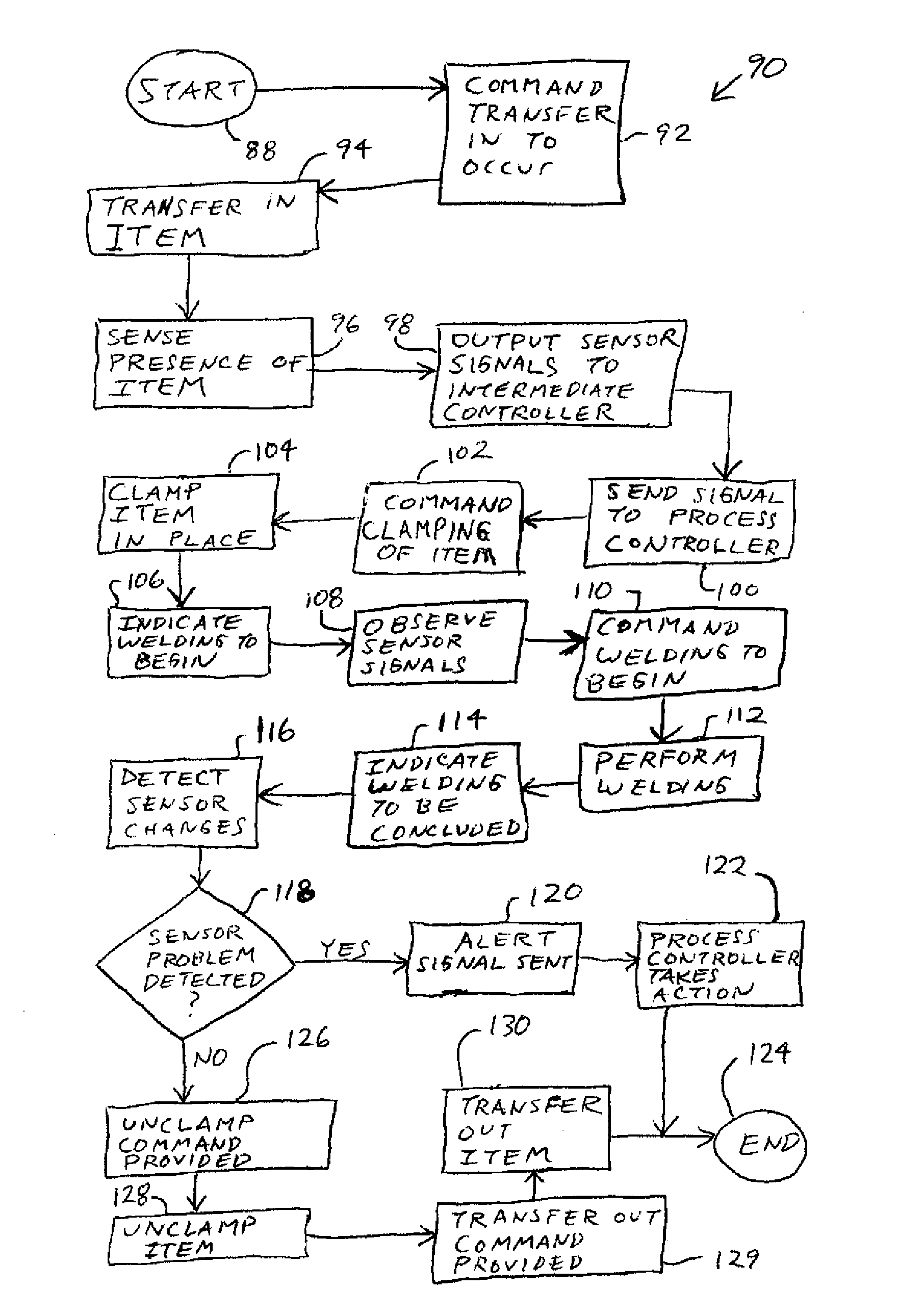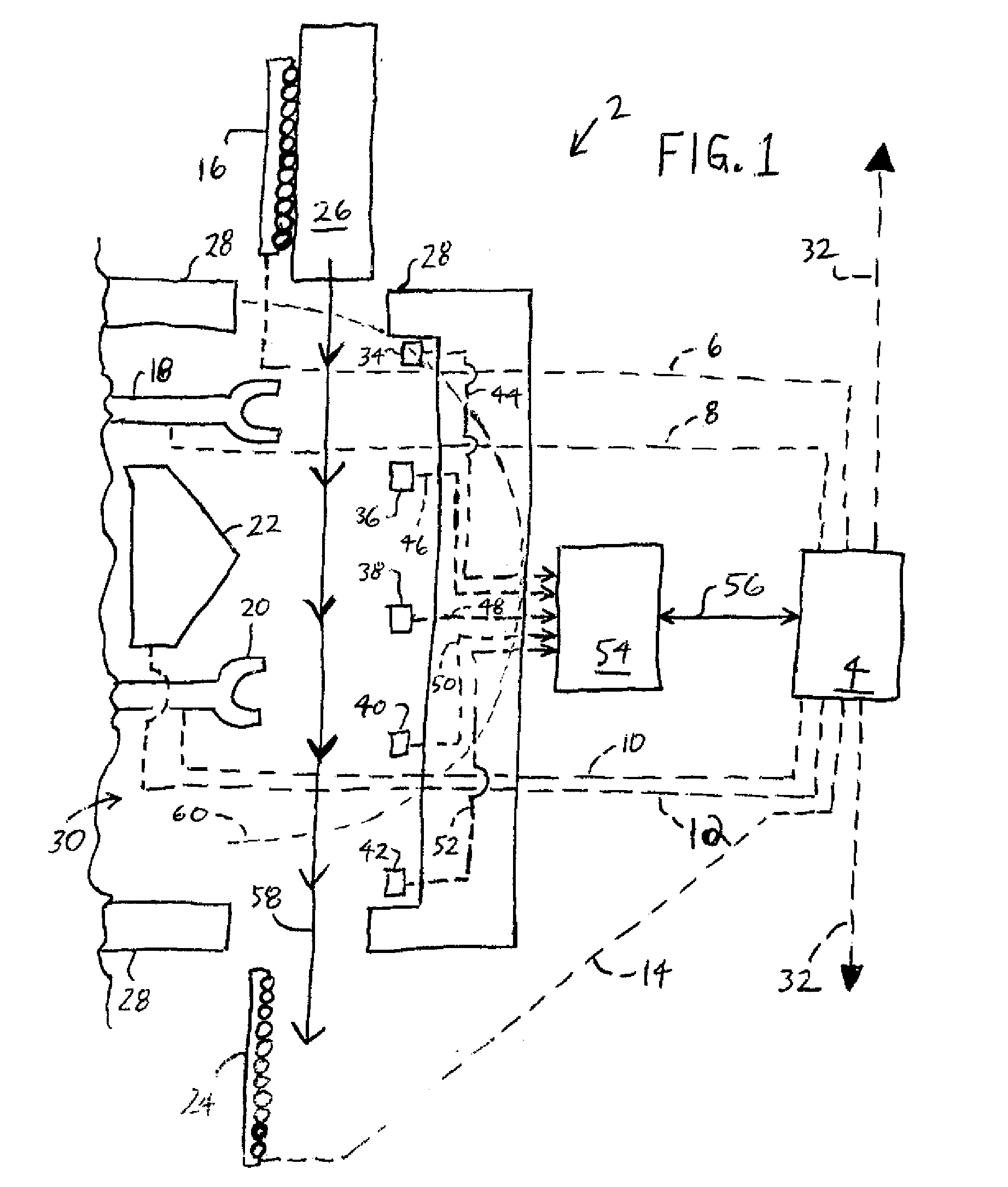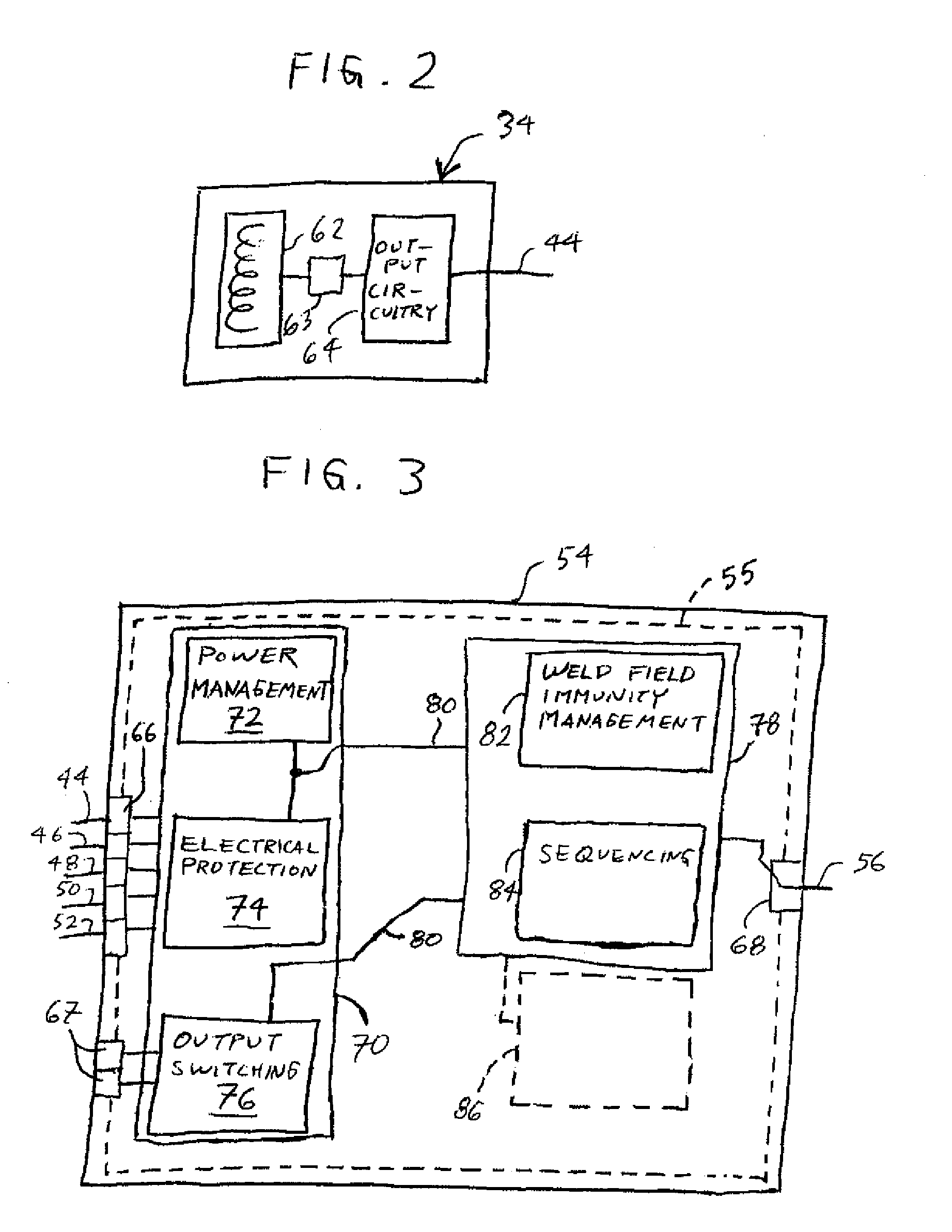Manufacturing System and Method
a manufacturing system and monitoring system technology, applied in the field of control and/or monitoring systems, can solve the problems of inability to operate in the presence of high-energy electromagnetic fields, inability to accurately and reliably and inability to accurately detect the presence of electromagnetic fields
- Summary
- Abstract
- Description
- Claims
- Application Information
AI Technical Summary
Benefits of technology
Problems solved by technology
Method used
Image
Examples
Embodiment Construction
[0017]Referring to FIG. 1, an exemplary automated manufacturing system 2 in accordance with at least one embodiment of the present invention is shown in schematic form. The automated manufacturing system 2 performs an automated manufacturing process, which in the present embodiment is a welding process such as that employed during the manufacture of automobiles, as described in further detail below with reference to FIG. 4. Thus, in the present embodiment, the automated manufacturing system 2 is an automotive welding system or a portion of such a system. Depending upon the embodiment, the automated manufacturing system 2 that is shown in FIG. 1 can constitute only a subportion of a larger system. For example, the welding operation performed by the system 2 can be only one of multiple welding operations that are performed upon a variety of automotive components that are being assembled with one another. Thus, it should be understood that the automated manufacturing system 2 is intend...
PUM
 Login to View More
Login to View More Abstract
Description
Claims
Application Information
 Login to View More
Login to View More - R&D
- Intellectual Property
- Life Sciences
- Materials
- Tech Scout
- Unparalleled Data Quality
- Higher Quality Content
- 60% Fewer Hallucinations
Browse by: Latest US Patents, China's latest patents, Technical Efficacy Thesaurus, Application Domain, Technology Topic, Popular Technical Reports.
© 2025 PatSnap. All rights reserved.Legal|Privacy policy|Modern Slavery Act Transparency Statement|Sitemap|About US| Contact US: help@patsnap.com



